#it's not even a particularly powerful monster. and its most interesting effect is niche as hell and barely useful.
Explore tagged Tumblr posts
Note
Sorry if you've answered before but whats ur fave yugioh monster?
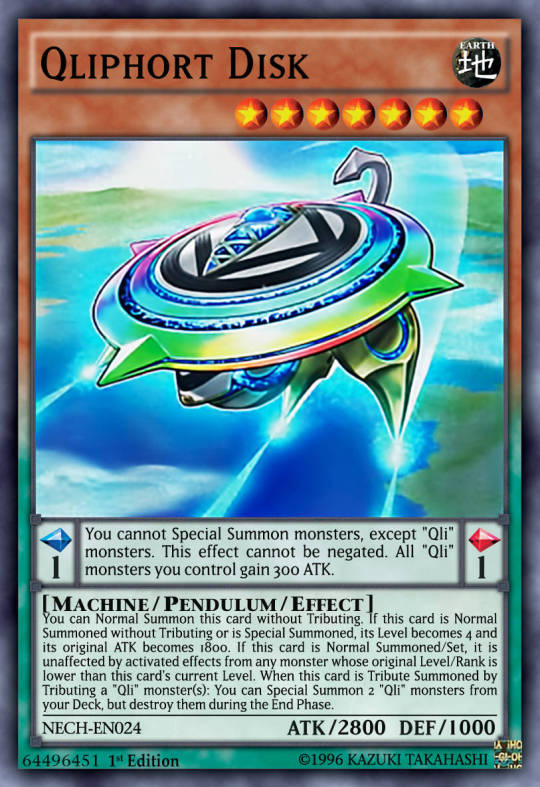
well it's GOT to be the qliphort homosexuwheel for me
#it's not even a particularly powerful monster. and its most interesting effect is niche as hell and barely useful.#but just LOOK at it look how cool and shiny and weird af it is. soaring through the air firing lasers at who knows what#i just greatly enjoy this mid tier average ass pendulum deck lmao#shout out to twin headed thunder dragon tho. if nobody got me i know twin headed thunder dragon got me#yugioh#yugioh tcg#asks
24 notes
·
View notes
Text
Recently, for the first time in about two-and-a-half years, I've been playing around on this one gamified-fiction-writing site—4thewords—which I first discovered back in 2018. During the 2018-2021 era, it was the single most useful tool I'd found with which to get myself to Actually Write; but now, after I've done a bunch of hacking to find it easier to get myself to write via pure internal motivation without the need for extrinsic deadlines of the sort it uses... it's still the most useful tool I've found with which to get myself to Actually Write, and has accelerated my progress at writing my current short-story-in-progress from maybe a few hundred to a thousandish words a week up to a few hundred to a couple thousand a day. Because, apparently, even if I'm way ahead of where I was a few years ago internal-writing-motivation-wise, I'm still not so high up that external motivation can't serve as a very high-powered force-multiplier.
This is interesting, because the vast majority of the gamified-productivity platforms out there just sort of straightforwardly don't work for me.
After a bit of introspection, I realized that the big important differentiating factor is: 4thewords, unlike almost every gamified-productivity tool I've tried to use, has actually-vaguely-complex gameplay. It's not, like, actively good, as a game; it's not something I'd play if playing it didn't produce writing as a byproduct; but it has any depth as opposed to no depth. It has, like, monsters which can be fought (by writing a certain number of words within a certain time-limit) and will drop items when defeated, and quests to fight monsters and/or retrieve items, and equipment which increases the effectiveness with which one can engage in this process via multiple different stats and is attainable via a mix of buying-from-shops and crafting-from-materials and getting-from-quest-rewards, and so forth. Plus the more-standard stuff, a daily-streak system and an XP system and a character-portrait-onto-which-one-can-equip-cosmetic-gear and so forth; but none of those things did anything for me on Duolingo, so I don't think they're the active ingredient, more of a side-benefit. But overall: moderately-many interlocking systems, as well-made games tend to have.
And that got me thinking... 4thewords is really not much of an RPG. Its story-writing is unmemorable (to the point where I literally do not remember anything about the plot, after my two-and-a-half year break), its gameplay leans grindy, et cetera. And it's still miles ahead of the more-traditional gamified-productivity platforms—it's the only one that's ever worked for me—just on the basis of trying at all, not entirely phoning things in with a superficial dress of game-themed-ness over an utter lack of functioning gameplay-loop.
And that, in turn, has me thinking: if that's really the operative ingredient, then there's a huge market-niche sitting there just waiting to be taken advantage of. Other, less-specifically-writing-centric, gamified-productivity tools along similar lines, building real gameplay into their gamification rather than just "look, here's an XP meter and a daily streak system, isn't this motivating?".
Possibly there's some reason I'm missing why writing would be particularly amenable to this and extrapolating it to other sorts of productivity-which-people-might-want-to-gamify wouldn't work. Or possibly there are other gamified-productivity tools with real gameplay in this manner, even if I myself have failed to discover them. But, if not, this seems like a very good opportunity, one which I'm even almost tempted to try to pick up myself despite this being in fact probably unwise with how many other higher-priority todos I've got piled up.
37 notes
·
View notes
Text

Regarding neopterans, always got to fit a mosquito monstie in there - QUITAS Title - Pestilent insect Monster class - Neopteran Known locales - High-altitude environments such as mountains and clifftops Element/ailment - Defence Down + Effluvium Elemental weakness - Dragon (3), Ice (2), Fire (2), Thunder (1), Water (0) Ailment weakness - Sleep (3), Blast (2), Stun (1), Paralysis (1), Poison (0) Quitas is a neopteran tending to inhabit more isolated locales such as mountains. They are distinguished by their rusty brown exoskeleton lined with insulating hairs, as well as a dramatically colourful orange abdomen and bright red eyes. Their limbs are slender, with hook-like claws to latch onto support should fierce winds blow, and the neopteran's flexible proboscis contrasts the long golden horn. With translucent red wings, Quitas is a competent flyer and adaptable monster. Quitas is a herbivore adapted to tackling the most rugged and resilient of flora. Any plant that can survive in the windswept mountainous environment must be unappealing to most, allowing Quitas an exclusive niche. It feeds on these plants by using a powerful acid secreted from the horn to dissolve their defensive walls, allowing the proboscis to reach inside and drain the fluids within. Though fatal to the plants, they can at least spread pollens that adhere to Quitas's hairs, spreading their next generation when the neopteran moves on. As a specialist herbivore, Quitas has no interested in humans or other creatures. At best, it regards them with mild curiosity. Researchers can operate with little fear if a Quitas is in the area, though be mindful of its horn should it come for a closer look. Flash bombs are recommended if at any point the neopteran becomes obtrusive. As expected, the acid produced from Quitas's horn is its primary offensive tool. Used either to stab or spread the acid, it inflicts Defence Down on hunters and can drive off most other monsters that may intrude on its turf. Otherwise, Quitas lashes with its proboscis and hooked claws, preferring to attack from the air in a hit-and-run fashion. That said, should Quitas feel overwhelmed, it can released a noxious gas from pores in its abdomen. Crafted from microbiological waste products from the plants it feeds on, this bacterial mixture replicates the atrophic effects of effluvium, though it is not as potent as the miasma hosted by monsters such as Vaal Hazak. Quitas prefer high altitudes, but they will occasionally descend to wet environments such as marshlands or swamps to reproduce. Males will fight for control of still water sources such as lakes, sparring with their horns until one backs down, and then the winners will display to females with their larger abdomens. Females lay their eggs on the shore where the male fertilizes them, and once the spawning period is over, the adults return to the mountains. The larvae soon emerge, differentiated from the adults by their ravenous carnivorous appetite; they will swarm and kill any living thing they encounter, and if no other prey is available, they will even turn on each other. Those that survive will eventually pupate and emerge as adult Quitas that follow their parent's trails to the mountains. Despite its chemical weapons, Quitas is not a particularly challenging monster (Low Rank -1, High/Master Rank - 1) on account of its low durability and generally placid demeanour. Still, hunters who earn its aggression must be wary of its lunging strikes and gaseous defences. Sleep weapons can stymie the neopteran, whilst dragon weapons disorientate them. Flash pods are also effective in reducing its aerial effectiveness. Quitas tends to avoid the attention of most large monsters, who tend to find it unappetising, but it is at the mercy of its nemesis, the snake wyvern Seraphibra. Well adapted to flight and boasting powerful sedatives, Seraphibra is exquisitely suited to preying on Quitas and a prime controlling factor in its population. - Thank you for reading and take care.
8 notes
·
View notes
Text
Hello my Pun-Puns, this week's Unearthed Arcana review sees one of the more obvious patches in the history of UA, three feats, and some new dragon-themed spells (kinda?). See, in Dungeons & Dragons, there are two draconic-themed races – the Dragonborn, which is shit, and the Kobold, which is actually good but people were mad that their “funny and unique” kobold barbarian wasn't actually as strong as a 7′ 250lb. half-orc. This is the fix.
Usual post-Tasha's changes – chose your attribute bonuses, languages, etc.
We get three new subtypes of Dragonborn. Chromatics and Metallics are split, while we get another sign that the Gem dragons are coming to 5e, filling out the rest of the damage types – force, radiant, psychic, thunder and necrotic.
All three kinds get a breath weapon, which now replace attacks rather than full Actions. All Chromatic and Metallics use Constitution saves, while Gems are dexterity, which feels backwards to me – Save vs. (elemental) breath weapon was the original Reflex/Dexterity save, while a blast of Force, Psychic, Thunder, or Necrotic damage feels more like something you just have to endure and power through than jump out of the way of- especially necrotic and psychic – not even sure how you dodge a psychic “breath.” The damage scaling issue is only slightly fixed here, using d8s rather than d6s, but the huge boost is that, rather than once per short rest, you can use this a number of times equal to your proficiency bonus per long rest, which pulls ahead at high levels.
Next come your standard Draconic Resistance, which is the same as the normal dragonborn, and expected.
Next up comes the fun add-on. Chromatic dragons, once per long rest, can shift from Resistance to Immunity for ten minutes. This isn't usually that useful, as resistance is usually enough, but very good for niche exploration in, say, acidic bogs or lava filled areas. A Red Chromatic could possibly speed run the Plane of Fire with this. It also has strong interactions with AOE spells, especially ones that linger like Incendiary Cloud, Stinking Cloud, and Cloudkill.
Metallics get a secondary breath weapon, which replaces one attack per long rest (and does not count towards base breath weapon uses). These can be either a Save vs. 20 foot push and knock prone effect or a Con save vs. becoming incapacitated until the start of your next turn.
Gem dragons are given two features here- 30 ft., one-way telepathy, and Gem flight at 3rd level, allowing you to summon gem-wings as a bonus action. For a minute, you gain a fly (hover) speed equal to your walking speed. Once per long rest.
Over all, a nice patch. Gem dragons might be a bit ahead of the pack though, but Fire and Poison immunity are quite nice.
Kobolds are no longer pathetic and are instead badass fearless warriors or sorcerers, but in exchange for all their flavor and uniqueness. They are small 30ft. speed creatures with standard darkvision rather than sunlight sensitivity.
You then get to chose a Draconic Legacy: your choice between Advantage vs. Frightened condition, OR one cantrip of your choice from the Sorcerer spell list – your choice of spellcasting ability, OR the ability to make tail attacks at 1d6+ Strength bludgeoning damage.
Finally, they get a Draconic Roar, a bonus action (proficiency bonus/long rest) that gives you and allies advantage on attack rolls against creatures within 10 feet of you.
This feels like an overcorrection that doesn't feel like a D&D kobold (I especially hate the Frightened condition advantage, which make you wonder why this species gets it and not, say, Goliaths, Orcs, Hobgoblins, etc.). But, mechanically, it's incredibly strong as a rogue – a small creature with medium speed (like the goblin), dark vision, the ability to pick up Booming or Green-Flame Blade (potentially as a wisdom cantrip), and a source of on-demand party advantage. Booming Blade as a wisdom cantrip also makes this a solid choice for a Tempest Cleric, of all things.
Finally, Feats, which are dragon themed, but not actually restricted by race.
Gift of the Chromatic Dragons. Lets you use a bonus action once per long rest to add an extra 1d4 (chromatic damage type) for one minute. Also, when you take acid, cold, fire, lightning, or poison damage, you can gain resistance as a reaction, proficiency/long rest. What's good here is that you are not locked in to a damage type when you chose this – say, you're not getting a Gift from a Green Dragon and stuck with poison – so this is a nice Absorb Elements like effect, very useful as a high level Feat choice when you start fighting dragons. It's actually better as a Dragonslayer-flavored feat, actually.
Gift of the Metallic Dragon is a bit stranger as it gives you access to Cure Wounds once per long rest, and with any spell slots you have, and your choice of Spellcasting Ability. Which isn't something Metallics have, even with the variant caster rules. You also gain a defensive reaction – add a d4 Shield-like AC Bonus to an attack against a creature with 5' of you, Proficiency/long rest.
This is really, really bad. Cure Wounds is easy to get through other spell-granting feats, and not that great of a healing spell - Wizards who want it should take the superior Artificer Adept feat, while everyone else has better options than a precious ASI. And shield is a must have spell, but it's good because a guaranteed +5 AC lets you intuit AC values and the worth of your spell slots vs. the hit. A d4's randomness is terrible, and only really useful for situations where your AC is beaten by 1 or 2. And likewise, that 5' range is horrible, especially on what's supposed to be a magical effect. At 15' or so, this could be mediocre party support, or if it could be added to Saving Throws. Here, it's trash.
Gift of the Gem Dragons starts with an Int, Wis, Cha ability score bonus of 1. Its defensive reaction is a telekenetic 10' push that deals 2d8 force damage when you are hit by a creature within 10' of you (proficiency/long rest). Pretty bad, to be honest. The damage doesn't scale, it doesn't actually effect the hit (so most spellcasters would probably prefer a Shield here if they have spell slots open), Strength is the worst save vs. most melee monsters, and 10' isn't that great of a clearance affect, basically a little disengage. Pass on this one too.
Finally, the Spells. Draconic transformation is a 7th level spell with a one time 500gp cost and a bonus action casting time and concentration. For this, you get 30' of blind sense, 40 ft. fly speed, and a bonus action 30' cone breath weapon, 3d8 force damage on a Dexterity save (half on a success). This is OK bonus action damage and some OK effects, but this is a 7th level concentration spell, when something like this should be a bit more of a game changer. Especially when compared to the concentration free, bonus action damage of Crown of Stars. Paired with flight, though, might push it into competition.
Fizban's Plantinum Shield is a 6th level abjuration spell, 1 minute of concentration for a shield you can move to another character as a bonus action. It sheds 5' of dim light, provides half-cover, resistance to elemental damage, and an evasion effect on Dexterity saving throws. This is a decent abjuration spell, especially in that underpopulated school, but I wish it was a bit more party friendly and worked against Constitution saves, as this is definitely supposed to be a dragon-fighting spell, and, say, the Green Dragon breath is a Con save. Still, evasion is one of the best defensive features in the game.
Flame Stride is very cool. A bonus action spell that adds 20 feet to your movement, prevents opportunity attacks against you, and burns any creature within 5' feet of you when you move (once per turn), which both scale with spell slot. The problem is that as a 5th level transmutation spell, it directly competes with Haste. And it only has a range of Self. But the burn effect could be cool on something like a Tabaxi or Bladesinger. Shame about that range, because it would be a fun gift for a monk or grappler barbarian.
Icingdeath's Frost, named after the dragon Ingeloakastimizilian, whose name has a stupid translation, rather than Drizzt's scimitar with a stupid name. In any case, think baby 3d8 Cone of Cold at 2nd level, but with an interesting rider that a failed save also covers the target in ice, dropping speed to 0 unless you use an action to break it. Pretty cool for a 2nd level evocation.
Nathair's Mischief is interesting, a 2nd level illusion spell that requires an apple pie crust component that fills a 20ft cube with draconic and fey magic, randomly determined by a chart. And you can move the cube a bit, as you concentrate for a minute. These random effects are a Wisdom vs. Charm, Dex vs. Blind, Wisdom vs. incapacitation, or Difficult terrain. Not particularly strong, but certainly appealing to fans of random magic and fey flavor. One thing I don't get is that “draconic” flavor – this is pure quirky fey, and trying to tie it to a fairie dragon seems pretty weak.
Raulothim's Psychic Lance is either a bog standard blast of psychic force, but you can of the creature's name. If you know the creature's name, the target gains no benefit from cover or invisibility from the following damage – the target then succeeds on an Int save or takes 10d6 psychic damage and is incapacitated until the start of your next turn.. Mediocre damage for a 4th level single target attack, but it's the best save and one of the better damage types. The naming rider is fascinating, and seems like another go at True Name magic.
Summon Draconic Spirit fills in a conspicuous gap in Tasha's Summoning Spells, coming in at 5th level and allowing for a Chromatic, Gem, or Metallic dragon. It is a large creature, with 14+ Spell level AC, 50+10 HP per level above 5th, and 80 feet of fly speed. At 19 Strength and 17 Con, this thing is a beast, and they resist all of the Chromatic/Metallic damage times or all the Gem types, once of which is shared with you upon summoning and is used for its 2d6 breath weapon. It can use its breath weapon and attack, starting with 2 melee attacks that deal 1d6+spell level piercing damage. Which is fine, but seems a bit low for a dragon. The rather interesting alternative is using the Strength 19 and large size to grapple and then fly an opponent 80 feet into the air for a drop.
40 notes
·
View notes
Text
Krenko’s Guide to Pokemon: Tyrogue Line ( Hitmon- )

POKEMON SHOULD NOT WEAR PANTS.
DESIGN:
I’m fine with how humanlike this looks. I’m fine with the bands on his wrists that look like bandages, and around his waist, but he’s clearly wearing shorts and shoes. I’d much rather a design that gave the illusion of shorts and shoes, like making his hip-section very furry and giving him hooves like a satyr. I accept the simple appearance in the early games, but it could really have used a redesign at some point.
I do love the way the side of its head looks like it’s wearing protection over its ears. Tyrogue is very clearly some kid ready to wrestle in school, and I’m totally on board with that... but actual clothes are wrong.
My other issue with Tyrogue is that it’s a male-only line without a female equivalent. See, female-only lines make sense because of how Pokemon breeding works. Sure, there’s no male Chansey, but that’s because every male Clefable, Wigglytuff, and Grimmsnarl is lining up to fertilize that egg. But with Tyrogue, there’s... nowhere for Tyrogues to come from other than Dittos.
Now, this may explain the relative scarcity of the Tyrogue, and maybe they are all the result of dittos, but it’s really weird to me if that’s the case. You’d think by now we could have a female Pokemon that could lay Tyrogue eggs the way Illumise can lay Volbeat eggs.
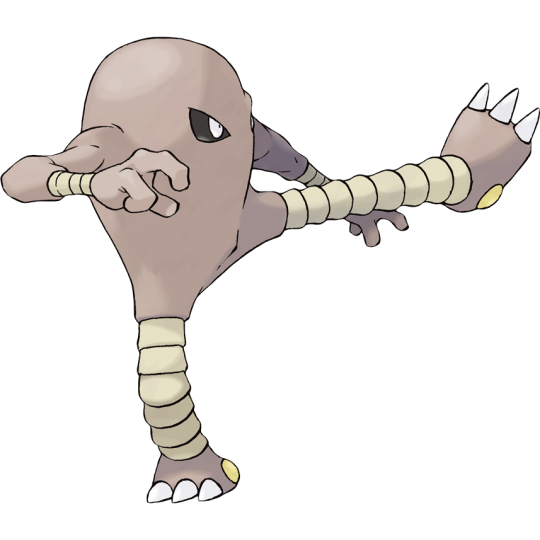
Now, Tyrogue has three evolved forms, and the first numerically is Hitmonlee. Hitmonlee is made of kicking, and its body really shows that. It doesn’t wear clothes, it doesn’t have a head, and those leg bands stretch for super kicks. Now, I’m pretty sure I’ve seen this thing in various mythologies, the headless man with a face on its chest, but Hitmonlee’s just got eyes. It’s a pretty simple design when you think about it, but it’s cool and striking and looks like a monster that fights like a man but better.
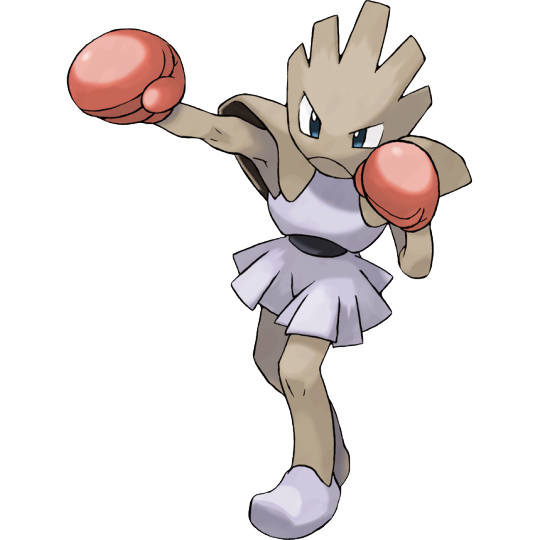
Hitmonchan has boxing gloves, a skirt, and booties. Look, I’ll get on a lot of Pokemon’s case for being too humanoid or whatever, but HItmonchan is seriously just some dude. His shoulder pads don’t even look like part of him, they look like he’s wearing them. I can’t even begin to imagine what a Hitmonchan might be that it just looks like that in nature. Its Pokedex entry mentions it has the “spirit of a pro boxer” and while that seems metaphorical, but when you see entries like “A Hitmonchan is said to possess the spirit of a boxer who aimed to become the world champion” you have to wonder if this is one of those supernatural things like how so many Ghost pokemon are actually dead humans.
Hitmonchan is an interesting design for a creature in a video game, but it’s not a good design for a creature in a world, which is what Pokemon need to be. I just can’t accept that your Tyrogue grew up into this without you buying gloves and booties for it.

Hitmontop mostly fixes the issue of inexplicable clothes. Yes, it looks like it’s wearing some sort of V-Neck leotard like a professional fighter might, but as it doesn’t pop off the Hitmontop’s body in any way, it could just be blue fur which is pretty normal in the Pokemon setting.
I don’t particularly like Hitmontop’s design overall- I think it looks too toylike, and much less badass than Hitmonchan or Hitmonlee. It feels like something you could just avoid by taking a step to the side. But unlike Hitmonchan, nothing in its design actively offends my sensibilities. It just feels more like a middle form than a final form.
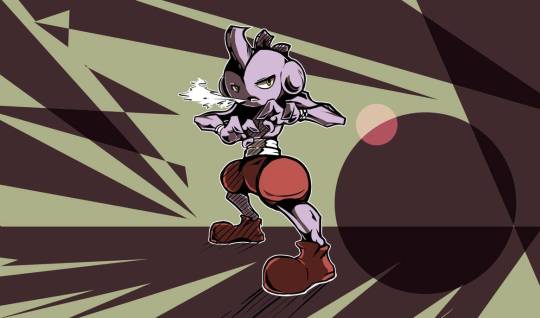
Art by MajMajor
EVOLUTIONS:
I mostly love the design of this evolutionary line. While HItmonchan and Hitmonlee were introduced in gen 1 as a matched set, Tyrogue and Hitmontop came in generation 2. Tyrogue is the best use of a Baby Pokemon, adding a pre-evolution to turn two previously unattached Pokemon into a branching path. They haven’t done that again since, even though there’s multiple paired lines that could really use it (most notably Tauros/Miltank and Cubone/Kangaskhan.) Also, Tyrogue evolves at level 20, but what determines its form isn’t some weird item or what time it is, but simply how its stats fall out. This means that to a novice it’ll seem random which one you get, but a skilled trainer can ensure Hitmonchan or HItmonlee (and a more skilled trainer can ensure Hitmontop.)
Also, with base stats of 455 each, Hitmonchan and Hitmonlee are much more deserving of getting a Baby Pokemon than things like Pichu and Jigglypuff, whose baby forms don’t do anything for gameplay but get in the way.

Art by IDunnoLawl
TYPING:
Unlike most Pokemon with multiple forms, all three of Tyrogue’s evolutions are pure FIghting type. Fighting is pretty evenly balanced offensively and defensively, and is notably super-effective against Normal and Steel types. The lack of a second type really hurts, though. Fighting is bad against six types, and that’s not something you want to see on all your STAB attacks.
STATS:
All three Hitmons are physical attackers with 50 HP and 110 Special Defense, but the rest of their stats vary. Hitmonlee has a mere 53 defense, making it the most fragile of the three, but its 120 Attack and its 87 speed make it the fastest and most damaging. Hitmonchan has a lower attack and lower speed, but higher defense, and Hitmontop has the lowest attack and speed of all three, but a 95 defense which actually compensates for its low HP.
None of these stat arrays are particularly impressive, but they all have solid attack stats, and their high special defense means their low HP is only a problem when confronted with physical attackers. Speeds for all three are about average.

Art by mcgmark
ABILITIES:
Interestingly enough, Tyrogue’s abilities are different than all three of its evolutions... but Tyrogue’s incredibly weak so there’s no reason to talk about building it.
Hitmonchan has Keen Eye (prevents accuracy loss) and Inner Focus (prevents Flinching and Intimidate) but what sells it as a Pokemon is Iron Fist, an ability that increases its punch damage by 20%. It’s not Earth shattering, but 20% on attacks is a very solid boost and Hitmonchan learns a lot of punches.
Hitmonlee can get Limber to prevent Paralysis, but nobody cares. Its other options are much better. Reckless adds 20% damage to any move with Recoil or a Crash chance. Unfortunately, Hitmonlee only has one of these. Fortunately, it’s Hitmonlee’s signature attack, High Jump Kick. Hitmonlee’s other ability takes a bit more work to use, but is even better in competetive battles. Unburden doubles Hitmonlee’s speed if its held item is lost or used. While berries are an option, a White Herb can be forced with Close Combat, turning Hitmonlee into a potent sweeper as long as it survives that first attack.
Hitmontop has the basically useless Steadfast (increase Speed when flinching), but has the ever-powerful Intimidate, as well as Technician. With Hitmontop already being the most defensive of the three, Intimidate just makes it a bit more survivable by lowering enemy attacks. Technician increases the damage of any moves with a base damage of 60 or lower, and Hitmontop has a variety of attacks that can take advantage of this. Most notably among these is Triple Axel, a three-hit move with an increasing power of 20, 40, and 60. With Technician, these hits become 30, 60, and 90 for a total of 180 power, albeit with problematic accuracy.

Art by Zilvan
MOVES:
Despite all three being physical attackers, all three use different Fighting type moves. Hitmonlee gets its signature High Jump Kick with Reckless, or can use Close Combat + White Herb with Unburden. Hitmonchan uses Drain Punch. Iron Fist bumps its attack to an effective 90, and the healing increases proportionately. Hitmontop, unfortunately, doesn’t have any great options, so Close Combat is generally the way to go. Revenge is an option with its slower speed and Technician fixing its ‘failure state,’ but unfortunately Revenge and Technician don’t stack if Revenge activates.
Coverage comes next. Fighting type is resisted by Bug, Fairy, Flying, Poison, and Psychic, and Ghosts are outright immune. Hitmontop’s Triple Axel is going to work just fine against all of those, even without Technician.
Hitmonlee has a decent lineup of options- Blaze Kick, Earthquake, Stone Edge, Poison Jab, Knock Off- but which you pick is really dependent on what you expect to face and what the rest of your team has coverage for. Earthquake’s the strongest, but it still doesn’t work against Flying or Bug types. Stone Edge covers them both, but is a much weaker move. Of course, Hitmonlee could take both.
Hitmonchan has great coverage options with Iron Fist enhanced elemental punches, plus the aforementioned Earthquake and Stone Edge, as well as Throat Chop. There’s no real right or wrong answer here, just be prepare for whatever you’re most worried about.
Tyrogue’s evolutions share a lot of utility moves. Rapid Spin, Mach Punch, and Bulk Up can be useful on any of them. For each of the three, I’d suggest a build of a fighting move, an off-type move for coverage, Rapid Spin for Rapid Spinning, and then whatever feels right to you of Bulk Up, Mach Punch, or another coverage move.

Art by birdmir
OVERALL:
Despite the three Pokemon here being very similar, they each have abilities and stat differences that give them different niches, with Hitmonchan’s being the best defined. I do wish Hitmonlee got more than one attack that worked with Reckless and Hitmontop’s signature attack were stronger (triple kick still only ends up at 90 power with Technician), but overall they’re not too bad, just a bit on the fragile side. A 10 or 20 point boost to each of their HP stats would make me feel a lot better, and small stat boosts between gens is something Pokemon occasionally does.
Hitmonchan and Tyrogue wearing clothes is really dumb, though, as are the ecological issues of a species that can’t reproduce without the help of a DItto.
In the future, I’d like to see a trio of regional forms for them, granting each a second element, but different from each other. Bonus points if the alternate Hitmonchan has Protean for his elemental punches. That’d be a cool Pokemon.

Little Asskickers by Aniforce
27 notes
·
View notes
Text
Ep 55 Caleb Meta
Warning: This post will contain a)- Spoilers for episode 55. If you haven’t seen it yet BEGONE. b)- Angst. Bc. Caleb. c)- yelling. if u haven’t worked out already: these posts are not planned. these posts are not thought-through. these posts are not edited. these posts are a stream of consciousness shrieking at the void that is u lot. Enjoy.
So. Uh. That episode was like..................A lot. Lots to unpack. LOTS. So I’m just going to touch on Caleb and the very specific niche deliciousness of him being completely and utterly retraumatised in that episode and how it may or may not pan out in future.
Meta under the cut bc it got Long.
So, DIVING IN: the nature of trauma in itself is repetition. Nightmares, flashbacks (of all their various forms) are ways in which the trauma itself repeats. Basically your brain Cannot Cope with what’s happened so it tries to just put you through the same thing over and over again like process this please.
Caleb has been dealing with that for at least a decade since the original trauma took place. Then we pile on the (highly symbolic and super-interesting in a really fucked up way bit of magic that is Modify Memory (i assume) which I have to meta on more in future) which is effectively a false memory that was removed (that his parents were guilty/in his twisted-logic mind deserved what they got) which makes a very interesting mirror for suppressed memories (again: big trauma thing. In which your brain Cannot Cope so hard it just blots the bad memory out of existence entirely) so he’s a whole mess of being trapped in an endless cycle of his horrible past (PTSD is a Trip, y’all).
This is...An echo of that but it’s something new. It’s very much the same KIND of thing, so it plays in to the trauma-repetition, but it’s a new incarnation of it. History repeating itself, etc, etc, delicious irony, all that great stuff fiction-creators live for.
It’s going to be deeply upsetting for Caleb. (No shit, Taryn). But it so beautifully, and terribly, feeds in to his deep-rooted fears that he is a toxic person, and that those around him are destined to get hurt (by him, not by him, it doesn’t really matter to the guilt brain, it’s all just fuel for that fire).
For example: Liam spoke on Talks about how, regarding Molly’s death, Caleb almost expected it because yup, that seems about right, par for the course. It’s one of the big reasons he’s been extremely reluctant to let the Mighty Nein get close to him (he’s directly said this in canon at this point, in his conversation with Beau).
He feels dangerous. He sees himself as dangerous. Partly because he sees himself as being constantly in danger, and by extension, those around him are also in danger. That’s external.
The internal part of him has been screaming ‘you killed the two people who loved you the most in the world in an unprovoked attack because you’re a monster’ for over a decade at this point. Not only does he not deserve any of these people, he feels like he’s destined to hurt them, no matter what he does, or how hard he tries.
This, uh, reinforces that in a very deep, obvious, and painful way. Not to mention the fact that, not only did he hurt them he hurt them with fire. Again. So it’s almost exactly the same pattern of shit coming back to haunt him for a second time:
Trent: Mental manipulation magic - fire - dead loved ones Demon: mental manipulation magic - fire - nearly dead loved ones.
It’s Bad. It’s Real Bad. That boy is going to have the panic attack of his life when he recovers from the immediate adrenaline rush of the fight. It’s not going to be pretty.
It’s going to drive home everything that little voice inside his head that sounds like Trent has been telling him since he joined these people. It’s going to undo all the struggle it’s taken to ignore that voice up to this point because don’t you see what happens when you get close to people? They can be used against you. You can be used against them. They become your weakness and you become weak because you care. Because this hurts. And if you were stronger, and smarter, then it wouldn’t... etc etc etc. *insert emotionally manipulative bullshit here*
BUT!
I actually think this could actually be good for him in a really weird way?
Hear me out:
Caleb has been living in a trauma loop for over ten years at this point. He’s been going over the same memories again and again and again, but he hasn’t done anything with them. He hasn’t actually fully processed what happened to him. And, and this is the biggest part: he hasn’t had anyone to push against.
It takes a lot to recognise abuse. It takes a lot in the modern world when there are phones, helplines, the internet and, let’s be honest: awareness. There are words for these experiences and there’s more chance of, accidentally or deliberately, stumbling across help out there that can look at a situation from an outside perspective and go: this is fucked up.
This is what Caleb needs.
On his own it’s almost impossible for him to recognise what was done to him and fully process it and begin to heal from it in a healthy way. Caleb has not actually started the process of recovery for anything that happened to him yet because Caleb does not yet recognise/understand what there is to process/recover from.
In Caleb’s mind, he is a monster. He did an unforgivable thing because he believed his parents deserved it as they were traitors. He broke because he was not strong enough to handle what he’d done. He was sent to an asylum and since escaping he’s just been afraid. That’s the only emotion he’s got towards Trent right now: fear. And it’s suppressing all logic, self-awareness, and the ability to think rationally about what went on.
Caleb was abused. Caleb was manipulated, mentally, emotionally, and magically. Caleb was a vulnerable kid who was deliberately chosen, carefully groomed, and then skilfully brainwashed by a figure with an enormous amount of literal and emotional power over him. Caleb was abused.
Caleb does not see this.
Caleb does not recognise that he was abused.
And I think this is where a lot of issues with Caleb kinda stem from in fandom? Because people look at him and just...How can he NOT understand that he was manipulated. Huh. Maybe he wasn’t. Because it’s just that damned obvious how could he not understand this?
Abusers rely on that. Abusers rely on their victims not understanding what they’re doing to them. Particularly when their victims are young, with relatively little real-world experience, and absolutely no grounding/preparation to recognise or combat any of this, in a society that is more accepting of the kind of teaching that radicalised Caleb than most are.
Caleb needs an outside perspective to look at what he went through and go ‘you know that’s fucked up, right?’ He’s kind of had that from Beau and Nott but not enough. Someone has to sit him down and go through every piece of what happened and be like ‘this is not okay’ ‘what he did to you was not okay’ ‘this is called abuse’ and then consistently validate those experiences until he understands.
Caleb has over ten years of trauma to process and unlearn. That...That does not happen overnight. That does not happen because your new friend looks at you and goes ‘yeah that was fucked up, dude’ and suddenly it all crystallises in your mind and becomes clear. That takes work. And effort. And a willingness to feel something beyond fear for your abuser and Caleb is Not There yet.
What this last fight does, though, is open up the possibility of Caleb starting to accept this a little bit.
Jester: “What the fuck, Caleb?”
Caleb: “I am sorry...They got inside my head.”
This is actually....Kinda huge for Caleb? Actually it’s kinda massive. This is Caleb experiencing a trauma incredibly similar to what he went through when he was younger (but on a much smaller scale, with far less dire outcomes) and being able to look at it and, still apologise, but explain that he was not in control of himself, and that ‘they got inside his head’.
This is the step he needs to take with Trent, too, this is the same admission that he needs to make to himself, and this is the first step that has to happen before he can even begin to start processing and healing his trauma. And he needs help with that.
This is not the part where I say I expect the mighty nein to become Caleb’s therapists. But they can be friends, they can be a support network, but most importantly: they can be an outside perspective.
They can’t process his trauma for him. They can’t work through his issues for him. They can’t take away any of his grief, or his guilt, or his pain, or his PTSD. They can’t make what Trent did go away. But they can point it out.
They can raise a red flag. They can point it out and say ‘this is not okay’. They can put a name to it. They can validate it. They can do the things that Caleb cannot do himself, which is look at what happened and be able to acknowledge, without the burden of guilt, and the fact that it’s so much easier to blame, and hurt, and punish himself than a figure he’s terrified of, and say that it was not okay, and explain to him what happened.
They can help him acknowledge his abuse and then he can start to help himself heal from it.
But this fight is, essentially, a microcosm of Caleb’s past. And I hope that if (when, please god when) the mighty nein, who were all either a)- directly charmed themselves, or b)- resisted the effect but were aware of its intentions and capabilities, do not react the way Caleb expects them to react (ie: the way he reacted to himself) with anger, and hatred, and blame, that’s going to start unlocking things.
I don’t expect a massive breakthrough next episode, don’t get me wrong, this is going to be a long, careful, painful process. But I think even the acknowledgement that someone affected that way by magic, or by emotional abuse, is not themselves, and is not, ultimately, to blame for what they may have done (or weak/somehow complicit in ‘allowing’ themselves to be targeted/victimised) is going to prove a really big thing for Caleb in the future.
Just that acknowledgement that they don’t blame him for what happened, that they understand he wasn’t himself, and that it wasn’t within his control to stop what was happening could, I think, prove huge in terms of his recovery further down the line...
TL;DR: Caleb experienced his past again on a much smaller scale with this fight, but having the party around him to react to him/it and reach out to him, and tell him it’s okay and that they don’t blame him will do A Lot for unlocking his potential recognition of abuse and recovery down the line.
#caleb widogast#critical role#critical role spoilers#liam o'brien#cr spoilers#cr2#cr2 spoilers#meta#critical role meta#caleb meta#my meta#imma just leave this here#long post#text post tag#abuse tw#emotional abuse tw#trent ikithon#is a trigger warning all of its own
141 notes
·
View notes
Photo

original post - gameplay post - full sized judai art
PREVIOUSLY: yugi/yami info
oh hey look ANOTHER ONE
Judai Yuki: An unusual boy with hair like a Blooper met in the depths of the Fusion World. With a scant memory and even less morals, Judai seems to be nothing more than a whimsical, cheerful teen with little more on his mind than having fun despite the dire straits the worlds are in. However, his memory seems to be connected to strange Darkness-tainted mirror shards scattered across the worlds. That, coupled with his unique abilities and almost instinctive mastery of Fusion Summoning, make him a surprising ally when wandering the Fusion World for answers proves fruitless, and his missing memory may hold the key to it all...
Upon using the Dark Magician card at the shrine in the center of town, Yugi and Yami are able to access the Fusion World, in which they hope to find the next Legendary Card. Arriving there, however, they find the world already in a state of chaos. The Darkness has already engulfed most of the land in fog, and absorbed many souls there into its hivemind under the guise of eternal peace and the end of suffering, and the few stragglers there express little hope for recovery. The “Guardian” of the legendary card is nowhere to be found, and reports from locals range from disparaging to hopeless - the guardian had never seemed to take their duties seriously, they had already been rendered helpless by the Darkness, and their own monster had been turned on them, turning both Guardian and Monster into servants of the hivemind.
In stark contrast to everyone else, Judai seems to find Yugi and Yami’s adventure interesting and potentially fun, and doesn’t do much else other than pester them as they proceed through the dimensions. However, he ends up bailing them out of a particularly nasty trap set by the Darkness’ troops, revealing not only surprisingly formiddable dueling skills but also a strange ability: he can not only summon ink like a Blooper, but also use it to draw things into reality, essentially creating new objects out of nowhere!
On finding a strange mirror shard that a local general was using to summon monsters, it suddenly merges into Judai, and the boy remembers something important-he had apparently created his own monsters once, the Neo Spacians! The memory shards seem to reveal locations where they were sealed away, and Judai insists on being able to find them. It might be related to the Darkness, considering the power they’re giving off-and hey, travelling with you guys is fun! Collecting more of the shards in the Fusion World leads him to Aqua Dolphin, and eventually Neos, who actually seems to resonate with the Dark Magician somewhat. It’s not the Fusion card they were looking for, but after reaching an impasse, the group figures they don’t have anything else to try out, and they all leave the Fusion Dimension together to plan their next move.
Gameplay
Judai is something like a Red Mage in terms of how he’s balanced - he’s decently offensive and somewhat good defensively, but his real strength is in his versatility and the special effects many of his monsters have. This is a particularly nice boon early in the game when your options are limited with only Yugi and Yami, but he becomes more and more niche as other characters start worming their way into the party. Despite this, he still has his own unique strengths! The Elemental Hero and the Neo Spacian monsters in particular are unique in that their cooldown times are very short, which is important since many of them get used in multiple Fusion Summons. (The Redacted monster...? Hm, spoilers. but let’s say he’s got open slots for...upgrades, in the future. youknowwhatitisdontlietome)
Fusion Summoning in this gameplay format builds off of the Advance Summoning that Yugi and Yami introduce in their special summon formats - instead of tributing any monsters one wishes, however, they must tribute specific monsters in order to use their Fusion Cards, which is why Judai’s low cooldown times are so important. In return, the Fusion Cards tend to have a wider variety of effects than Yugi and Yami’s Advance Summons, and Judai will often be the go-to member when one wants to fire off multiple status effects or stat drops at their enemies. Because of the elemental nature of his Fusion Deck, he has a much larger variety of summons compared to most of the other characters except possibly Yuya, and that combined with the ability to fire them off relatively quickly makes him a useful support character well until late in the game.
Inking In is a rather meta-like ability. It consists of Judai actually drawing directly onto the paper world itself, and while his doodles look rather childish, they’re just as sturdy and real as anything else in the world. However, due to his own lack of memory, and his own abilities being rather juvenile at first, Judai only has a limited amount of items he can draw into permanent reality without them falling apart immediately.
Duel Disc? No. Duel Discus.

See?
In all seriousness, there is a reason that he has a duel disk for a weapon, mainly due to [SPOILERS] sort of character upgrade that you can probably guess at (especially if you already read the large plotting post). And yes, he throws it like a boomerang. It’s considered a ranged attack that hits multiple enemies.
Elemental Hero Neos is Judai’s Legendary Summon, although it’s blatantly hinted that this summon is incomplete by dint of not being a Fusion Monster. However, on its own it already is a useful debuff that can be effective even against bosses normally resistant to this sort of drop, although due to its unpredictability it may not be wise to completely rely on it pulling through. Later upgrades guarantee multiple stat drops of higher value, as well as inflicting random status effects.
and yes his hair is actually blooper-shaped in this au. the blooper eyeballs are patterns in his darker hair portion. they blink.
7 notes
·
View notes
Text
You should play Namco’s lost arcade-action classic, Mr. Driller DrillLand
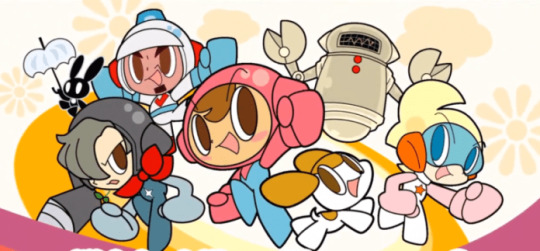
Enlarge / Right about now sounds good for a blast of 2002’s best arcade-puzzle gaming.
Bandai Namco
In recent years, Japanese game makers have tried to revive the 16- and 32-bit era’s beloved niche of arcade-puzzle series, but these nostalgia cash-ins have mostly failed. Capcom’s Puzzle Fighter came back to life on smartphones as a free-to-play gacha mess. Sega’s Chu Chu Rocket returned with too many complications as an Apple Arcade exclusive (and, crucially, zero multiplayer). And Hudson’s Super Bomberman sputtered onto the Switch’s 2017 launch lineup as a mess, though it eventually received some face-saving patches.
As a result, I shudder whenever I see a cult-classic, puzzle-arcade series return on modern, download-only storefronts. The genre that used to thrive on cartridges and CD-ROMs has become ripe for microtransactions and slot-machine mechanics. Which is why I’m taking the unusual step of reviewing such a launch going right.
Mr. Driller DrillLand, out today on Windows PCs and Nintendo Switch, is one of the rarest games from Namco’s early-’00s period, which was otherwise marked by the blistering 3D likes of Ridge Racer and Tekken. The cartoony, 2D game, which launched exclusively in Japan in 2002 for the GameCube, was arguably a swan song for the studio’s legacy as an ’80s arcade juggernaut. Thankfully, today’s updated, translated version leaves well enough alone: its pure gameplay experience returns with 1080p-friendly touches.
$30 may be a bit steep for this classic game, but it’s the best Mr. Driller game ever made, and it’s a remarkable love letter to the Namco of old.
Clearing a path to a flow state
The “basic” mode mostly resembles the classic gameplay of the 1999 original. Every mode in this game has an amusement park theme, and this one is clearly the “It’s A Small World” segment.
Dig further, and you’ll find other countries. Here, Puchi makes his way through France.
Different characters have different strengths and weaknesses. This robot character is a bit slower, but he gets double the health.
That’s the star of Dig-Dug, if you’re wondering.
This Indiana Jones-like mode is the most interesting, thanks to its treasure-routing challenge.
This mode, an homage to Namco’s Tower of Druaga, has some cool adventure-mode tweaks.
Collect potions, then use their powers to trap and capture ghosts.
The least interesting mode in the package merely makes you contend with randomized bonuses.
Plus, quite frankly, I’m happy to have this enormously cheery and weird game right now.
Like other puzzle games from its era, DrillLand comes with a silly and largely unnecessary plot, and it includes the same Japanese voice acting found in the 2002 version. Mr. Driller and his friends have been invited to visit a fictional amusement park, and its every attraction twists or modifies the core Mr. Driller gameplay formula with some thematic gimmick. (His friends, if you’re wondering, include his dad—as in, the guy who starred in Dig Dug—and a cheery, talking dog named Puchi.)
One of these attractions is essentially a port of other Mr. Driller games, because it simply asks players to dig, dig, dig. Your primary object is to dig through colorful blocks from the top of the screen as deeply as possible. That may seem simple, but if you dig carelessly, you may leave hanging fragments that fall and crush you, and your digging path is complicated by “solid” blocks and a requirement to pick up oxygen tank refills. This is a high-score chase mode, since you’ll get more points for clearing various depth amounts quickly and efficiently.
Since the first Mr. Driller game launched in 1999, no other puzzle game has copied its formula. Unlike color-matching and piece-fitting classics, Mr. Driller emphasizes the flow state of constant, efficient movement and digging, which benefits from spatial awareness of shapes and colors all around you. Matching other colored blocks factors into your success, and your downward digging can put color-matching combos into motion, so there’s a two-headed thrust to your Mr. Driller DrillLand progress. That this gameplay still feels special and unique makes this 2002 re-release a worthy puzzling option for anyone who may have missed the series before.
But even if you find that puzzle system a bit wanting, the four other modes add clever twists to its formula. The best mode removes the oxygen-filling requirement and converts the whole game to an Indiana Jones spoof, where you’re forced to create digging paths that lead to treasure pickups while avoiding traps and—oh, I love these—giant rolling stones that will smash through your digging path and threaten you, like the chase scene from Raiders. Another mode pays homage to Namco’s classic Tower of Druaga series, as it forces Mr. Driller to take specific paths through a dungeon, collect treasure and keys, and fight bosses. And a haunted-house mode turns you into a ghostbuster of sorts, as it makes you freeze and capture ghosts within the blocks that you’d otherwise dig through.
That’s the Puchi attitude
Need a cheery, silly game? DrillLand has you covered.
You’ll switch from mode to mode by wandering across this map interface.
As far as a silly, family-friendly script is concerned, DrillLand delivers. Expect plenty of groaners and cheese.
Boy, I’ll say.
The points you accrue in every level can be spent on things like cards.
These appear to exist primarily to dole out trivia.
Want to buy some utterly worthless collectibles? Go ahead.
Between each of these challenges, a fully voiced cut scene will play out with the Driller crew’s personalities clashing in giddy, Saturday morning fashion, and while you can mash buttons to skip these, I’d suggest not. The whole package radiates with DayGlo-bright designs—all handsomely scaled to modern screen resolutions and a 16:9 ratio—and part of the inflated $30 cost is that you’re sometimes expected to sit back and marvel at how weird and elaborate the game’s story gets.
This should particularly delight anyone who still fondly recalls��Katamari Damacy, which debuted on PlayStation 2 two years after DrillLand‘s launch. You can see the seeds of Katamari‘s wacky plot and King Of All Cosmos character planted by the Driller family’s saccharine-sweet trials. Meanwhile, DrillLand‘s perky J-Pop soundtrack, presented here at full fidelity, isn’t identical to Katamari‘s classic tunes by any stretch, but the up-tempo charm and vocal-melody components are almost identical.
The weirdness doesn’t end there. At any time, you can load a lengthy, music-driven parade sequence, where various Driller-series characters stomp across your screen, almost-but-not-quite in time with the music. There’s no way to fail this mode; it’s not technically “gameplay,” and you can only modify it by pressing a joystick to change the marchers’ tempo. Why is this in the game? I have no idea. But now I kinda wish every video game had an optional parade sequence as an amusing distraction. (Just think of how TLOU2‘s post-apocalyptic Seattle might look with its mutated monsters stomping to the music while holding batons.)
Big-screen treatment for two-player modes.
Smaller screens for three- and four-player modes.
On PC, it’s easy to set up everyone’s preferred controllers.
To finish the package, the game includes a pair of four-player battle modes. One is a parallel race through standard Mr. Driller gameplay, where each player races to dig through identical content, and the other is a ho-hum battle mode where players dig through the same, shared screen in search of a randomly placed treasure. The latter feels unfair as a versus game, while the former is pretty meager with its battling and “garbage” mechanics. Still, as family-friendly four-player modes, they’re better than nothing (but, sadly, don’t work online).
Nitpicks, not dealbreakers
The biggest drawback to the whole package is a $30 pricetag, which is high for a 2002 re-release. As far as “new” content, you’re getting a newly translated script (no new English voice acting), an admittedly smooth upscaling of the original 2D assets to 1080p resolution, and a new “casual” difficulty level—which, I should be blunt, is far from casual. Mr. Driller DrillLand can be pretty unforgiving to new players due to how quickly its falling block fragments fall and harm your character, and entire runs will get wiped out due to a severely limited pool of lives. (Casual mode only adds a single extra life to each mode, which, I have to say, doesn’t suddenly make the package newbie-friendly.)
Worse, the game’s digital download doesn’t include any form of instruction manual, so you’ll go through trial-and-error to answer serious questions about the game. Which levels should I play first? Do shiny blocks, which disappear after a certain amount of time, mean anything in a level? Why don’t each individual mode’s “level 2” and “level 3” sections unlock? Is there a point to spending in-game coins on a shelf of collectibles? And how do all of the items in the item shop work? The last question is crucial, because beginners will rely on that item shop, not the “casual” mode toggle, to survive their earliest sessions. Some in-game guidance to that effect would have been appreciated.
Thus, it’s not a perfect collection. Still, I’ll take a re-release that’s doggedly old-school over the microtransaction alternative. DrillLand is exactly the kind of unique, satisfying, and cutesy puzzle-action game I want right now, and its brand-new appearance on the portable Nintendo Switch is particularly welcome. (And since the series’ iOS $1 version from 2009 is dead, thanks to a lack of 64-bit update, we’ll have to settle on this week’s solid port.)
Source link
قالب وردپرس
from World Wide News https://ift.tt/3fXGSxU
0 notes
Photo


So I quickly put together and ran a Valentines Day one-shot dungeon last night for my Pathfinder group. I think I’m finally starting to capture the Paizo map aesthetic. If anyone is interested in running it, keep reading! I would also love to hear critiques, both on the scenario and on the map itself. My group really enjoyed this dungeon and I think it’d be worth updating into something professional.
This dungeon was originally built for an average party level of 11-12, 3-4 players. If you’re worried about fitting it into one session, cut each monster’s health in half. Treat every room as pitch dark unless otherwise specified. White boxes designate random traps, I would use anything under CR 6. Chests should be full of random but fairly high-value gems and coins, perhaps even a few magical items. This is a dangerous and trap-filled dungeon, and while the reward at the end is pretty valuable, its also a little niche. Side-treasure can help make this more worthwhile.
1. After a long dark stairwell down deep under the earth, the room opens up to this tomb. The sarcophagus in the center of the room has a story carved into the stone. This story details a sorceress and her husband who were deeply in love. When he died in a freak accident, she decided she could only marry someone who was heartier than him. She altered this tomb as a gauntlet of sorts, and any man who could survive it's many challenges could have her hand in marriage.
2. In the center of this large room rests an enormous bowl, filled to the brim with rings. The vast majority of them are nearly worthless, fetching 50g at most. Allow players to sift through the rings, rolling either Perception or Appraise, perhaps improving their chances with a Detect Magic spell. A roll higher than 20 yields a lesser minor ring, and a roll higher than 30 yields a greater minor ring. Allow the PCs to pocket as many rings as you think is appropriate.
The neighboring room is merely a reminder to look for traps. The pressure plate in front of the chest should be fairly obvious, with the remains of ancient victims littered over it. Fill the chest with random gems and coins.
The door exiting this room is locked, and can only be opened by magic. A relief sculpture of a beautiful bride holds out her hand, as if to accept a ring in a marriage ceremony. If the players can find the wedding ring; topped with a beautiful diamond; and place it on her finger, the door will open. No matter how hard the group tries however, the ring cannot be found. After 1 or 2 rounds of ring searching, the rings begin to shift and rumble. Out emerge two Crawling Hand Swarms (stats included at the end), which attack the party. A DC 20 Perception check will discover that one of the hands has a wedding ring on it. Defeating the proper swarm yields the ring, although the party should probably defeat both.
After placing the ring on the sculpture's hand, the door slowly swings open. A deep rumble shakes the room as a Huge sized crawling hand emerges from the bowl of rings, closing it's fist around the remainder and preventing the party from taking any more. The ring is now stuck on the sculpture's finger and cannot be removed.
3. This room is lit by an eerie green light, emanating from a pool of thick green slime. As the party enters, have a number of Emotion Oozes emerge from the pool, one for each player. This causes the pool to dry up. These emotion oozes are attuned to the Jealousy emotion, and do not shift to any other. They should form into weak facsimiles of the party members, and do your best to endear them to the group. Unless provoked, they will not attack. However, they will use their Compel Emotion ability to subtly make the PCs jealous. A good angle is for a party member to be jealous of a particularly nice magic ring, but ultimately the outlet for jealousy is unimportant. The oozes are moreso a curiosity than a challenge, however not defeating them here could prove dangerous in later fights. The oozes should markedly avoid setting off any traps, potentially aiding the PCs in that way.
4. This room is a long hallway, lined with pillars. At the southern end sleeps a blind Catoblepas, lured inside by the sorceress and kept alive by her magic. The specific creature isn't important, it merely needs to be ugly, violent, and dangerous. A lone torch flickers above the creature; the only light in an otherwise pitch black room.
The door exiting this room is locked, however an obvious switch at 4a opens it. This is a noisy process though, and will almost certainly awaken the beast unless the party takes some extra step to keep it asleep. The pink trap is the real problem. The first person to cross the threshold triggers it, releasing a fine mist of Philter of Love. It only effects the person who triggers the trap. The first creature they lay eyes on is now the permanent object of their affection; a level of love deep enough to probably supersede even their party members. More than likely the first thing they'll see is the beast, which should make this fight very interesting.
5. This next area is a tangle of disused tunnels. The walls of these are lined with sarcophagi, possibly even some ancient corpses merely laying in the open. There are traps all over, mostly sending the message that these branches should be avoided. Whenever anyone passes 5a, have them do a Will Save. They are rolling to resist the effects of a harpy's Captivating Song (DC 16). Should they fail, their character is now helplessly drawn to the source of the singing, at 5b. Here, the skeleton of a harpy is affixed to the wall with chains and spikes. It does not move, but a song nonetheless echoes out of its skull. Should nobody stop them, a captivated player will happily walk right into the pit of spikes at the end. Almost any ranged damage to the skeleton will knock it to pieces, ending the effect.
6. Standing in the center of the room is the Sorceress herself, in the flesh. She is ravishingly beautiful, and looks young despite all evidence. Skeptical players can use various spells to discover that she is actually ancient, somewhat akin to a lich. She is not interested in fighting, however, and after congratulating the party for making it this far, teleports out of the room. Standing beside her before she left is a Tophet. This is their final challenge.
Upon defeating this creature, she reappears in the room with the wedding ring on her finger. She seems to be in shock, having given up hope long ago that anyone would ever succeed in her challenge. A look of deep love and bliss on her face, she ages before their eyes and crumbles to dust, leaving only her crystal ball behind.
This is a Crystal Ball wondrous item with See Invisibility. It is also an intelligent item, displaying the sorceress' face who frequently reminds the party that she loves them, and who refuses to allow them to use the powerful item unless they return the gesture. She truly loves the party, however her feelings can definitely sour if they aren't kind and loving in return. Should this occur, perhaps if the party tries to sell her, she suppresses her abilities, becoming truly useless and rendering her practically unsellable. So far as she's concerned she is married to the party, and she acts as such.
SWARM OF HANDS NE Diminutive undead (swarm) Init +0; Senses blindsense 30 ft., darkvision 60 ft.; Perception +4
DEFENSE AC 14, touch 14, flat-footed 12 (+2 Dex, +2 size) hp 27 (3d8+3) Fort +2, Ref +0, Will +4 Immune: weapon damage Defensive Abilities: swarm traits
OFFENSE Speed 20 ft., climb 20 ft. Melee: swarm (1d6) Space: 10 ft.; Reach 0 ft. Special Attack: strangle
STATISTICS Str 13, Dex 11, Con --, Int 2, Wis 11, Cha 14 Base Atk +2; CMB —; CMD — Feats: Toughness Skills: Climb +9, Perception +4, Stealth +12, Survival +4; Racial Modifiers +4 Survival Languages: Common (can't speak)
ECOLOGY Environment: any Organization: solitary, pack (2–5 swarms), or infestation (6–12 swarms) Treasure: incidental rings
6 notes
·
View notes
Text
Aether Revolt Commander Set Review
For each new set, I write an article discussing the new legendary creatures and the nonlegendary cards that I think will be relevant in Commander.
The Set Overall
I think Aether Revolt is a great set for Commander. Most of the legends are playable (and a few are quite powerful), there are a lot of cards for niche archetypes, and the artifact decks got a ton of support. Considering that Standard sets are not designed with Commander in mind, I think we made out like bandits.
Also, Paradox Engine is the most broken card to see print in the last few years.
The Commanders
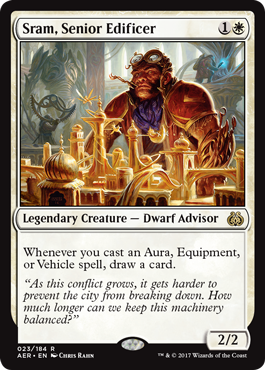
He may seem like he’s just a value commander, but the best version of Sram is probably the Equipment combo deck. There are so many 0-1 CMC equipment (like, more than 50) that it’s not particularly difficult to cast a dozen or more of them in a turn (it helps if you’ve got cost reduction effects and some additional card draw). Once you’ve dumped a few dozen equipment onto the field, you can just slap them onto Sram (with a little help on the equip costs from Puresteel or Sigarda) and swing for a ton of Commander damage. Here’s the list I’ve been playing with:
Sram Equipment Combo
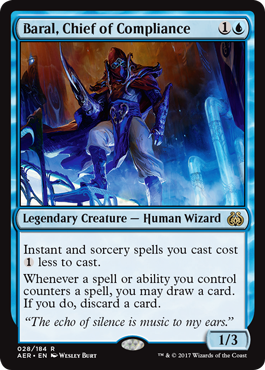
Baral is quite good in Azami and Talrand, but I think he’s even better in the command zone. My first take on Baral was a pretty passive draw-go list, but a clever reader suggested High Tide combo and the resulting deck I made is pretty damn solid. Baral can save you a dozen or more mana over the course of a High Tide turn, greatly improving your odds of comboing off. Here’s the list I’ve been playing with:
Baral High Tide Combo

Haste and the ability to protect one’s self are key qualifications for a strong Voltron commander (a low CMC is another), so Yahenni fits neatly into that archetype. In addition, their sacrifice ability gives you much more room to build around them than similar monoblack Voltron commanders (Grave Pact effects and/or Dawn of the Dead/Corpse Dance seem like good places to start). Here’s a (rough) list to get you started:
Yahenni, Undying Partisan

This is not a card for Commander. I say this because it seems as though Kari was specifically designed to keep you from doing cool things with her. Exiling the token at end of combat prevents you from clamping it or building up a token army, and her attack trigger doesn’t play very nicely with extra combat steps, either.
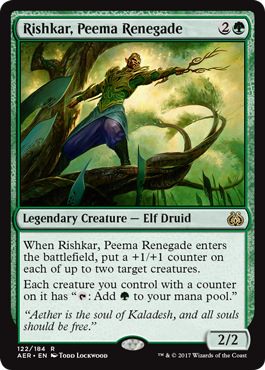
In addition to being a great addition to various +1/+1 counter decks, Rishkar is a strong commander that turns random value creatures into mana dorks. A list:
Rishkar, Peema Renegade
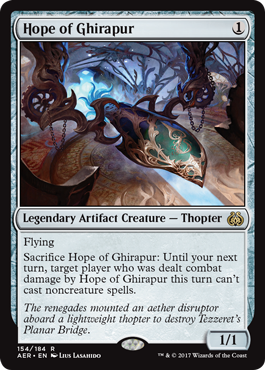
There are only a handful of ways to repeatedly recur this dude in monobrown, so I think you’re better off trying to figure out how to win with Commander damage than you are trying to Silence everyone for the rest of the game. Cheap, evasive bodies are exactly what Voltron decks are looking for, and no other colorless commander comes down as quickly as Hope.
The Maindeck Cards
In this set review, I’ll be using two five-point rating scales to evaluate the nonlegendary cards, one that measures how many decks a card is playable in (we’ll call that “spread”), and one that measures how powerful it is in those decks (”power”). Here’s a brief rundown of what each rank on the two scales means:
Spread
1: This card is effective in one or two decks, but no more (ex: The Gitrog Monster). 2: This card is effective in one deck archetype (ex: self-mill decks). 3: A lot of decks will be able to use this card effectively (ex: decks with graveyard interactions). 4: This card is effective in most decks in this color. 5: Every deck in this color is able to use this card effectively.
Power
1: This card is always going to be on the chopping block. 2: This card is unlikely to consistently perform well. 3: This card provides good utility but is not a powerhouse. 4: This card is good enough to push you ahead of your opponents. 5: This card has a huge impact on the game.

Spread: 4
Power: 2
Getting revolt and only being able to target tapped creatures are not insignificant restrictions, but White has basically zero ETB creatures that just straight-up kill stuff, so I’m willing to give her the benefit of the doubt. Note that she is Sun Titan- and Recruiter-compliant and that she’s a playable Dwarf for Depala.

Spread: 4
Power: 1
Using her fairly seems like a terrible idea, since she requires you to let somebody else kill you (which could obviously backfire horribly if anyone has a removal spell). She could be interesting if you’re trying to dig really deep with Necropotence or Hate someone to death, but Resolute Archangel seems like a safer bet (and you actually get to keep your angel).

Spread: 1
Power: 2
This one is a little speculative, since I’m not sure exactly what deck it fits into. However, White sources of card advantage are usually worth scrutinizing, and small bodies are relatively easy for White to recur.

Spread: 2
Power: 3
An auto-include in Jor Kadeen that I believe has potential in other White token builds. Three bodies for four is not a terrible rate, and when you factor in the mana generated by this card, you’re actually paying quite a bit less than that.

Spread: 5
Power: 3
The jump between 2 CMC counterspells and 3 CMC counterspells is a big deal, but so is the added flexibility of a Stifle. Any deck running a lot of counters is going to be happy to add this to its suite.

Spread: 1
Power: 1
This will work about 30% of the time when you play it in your Breya tribal Thopter list.
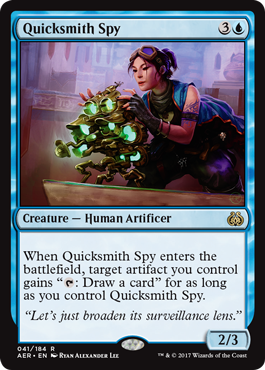
Spread: 1
Power: 3
This is actually pretty legit as a way to draw more cards in Paradox Engine combo decks. Not sure other decks will be able to get enough value out of it to justify its inclusion.
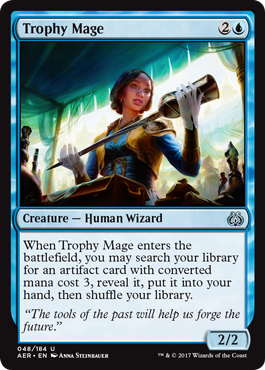
Spread: 2
Power: 2
I think that you probably shouldn’t run Trophy Mage if your game plan is to grab Worn Powerstone or Coalition Relic or something. If, however, you’re running combo pieces that happen to be CMC 3, the Mage will do good work.
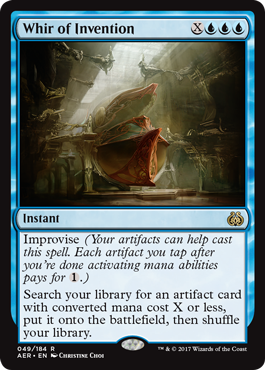
Spread: 3
Power: 3
The initial testing I’ve done with this card has shown me that Improvise is significantly worse than Convoke since you’re not likely to be running a bunch of artifacts that don’t already tap for mana. While you could typically count on Chord of Calling costing 2ish mana less than what’s printed on the card, you should expect that Whir of Invention will not be discounted during most games (unless your deck has a bunch of artifact tokens for some reason). The card is somewhere between Transmute Artifact and Reshape in power level, and I don’t think it’s correct to run it unless you’ve got artifacts that will win you the game (whether by themselves or as part of a combo).

Spread: 1
Power: 1
This is not a Dark Confidant, and I don’t think the energy deck is a real thing in Commander. You should probably view this as a worse Pain Seer.
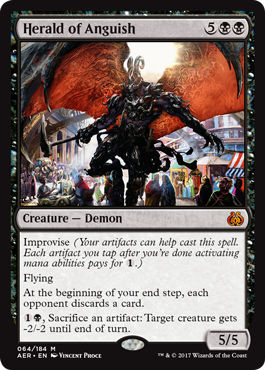
Spread: 2
Power: 2
Not really sure what deck this is for. Kaalia can do much more powerful things than trading Signets for Disfigures or taking a card from each opponent and I doubt the Black artifact decks are interested in a sac outlet that costs 7ish mana.

Spread: 2
Power: 3
If your metagame tends towards low mana curves with lots of mana dorks and small utility creatures, there’s a reasonable chance that this will be a 1-mana board wipe.

Spread: 1
Power: 3
I think this could be good in something like Purphoros, where you have a ton of tokens to feed to it and more creatures entering the battlefield on your side is exactly what you want to be doing.

Spread: 1
Power: 2
Some Zada decks run Fists of the Anvil, and this is strictly better.

Spread: 1
Power: 3
I think Kari Zev’s Expertise could be pretty sweet in a Zada deck. Giving all your dudes haste is marginal but casting a million cheap spells for free seems perfect for the deck, since Zada can have a little trouble generating enough mana while she’s going off.
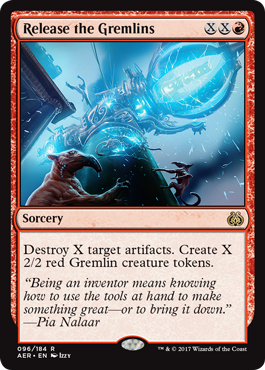
Spread: 4
Power: 2
I’d probably play this if it was colorshifted to White, but Red has a lot of strong competitors when it comes to artifact destruction (Vandalblast, Shattering Spree, Rack and Ruin, etc.). I think Purphoros might like it, since both halves of the card are useful in that deck, but most other lists can skip it.
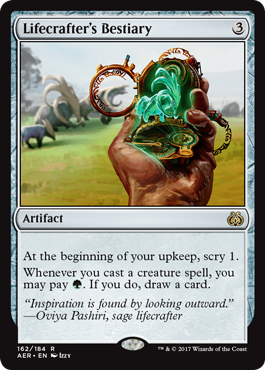
Spread: 2
Power: 3
This seems like a solid addition to any Elfball-ish deck that has a lot of mana and is always looking for gas. For example, that Rishkar list I posted earlier.
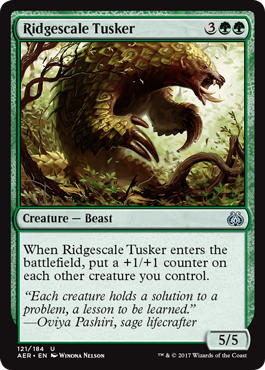
Spread: 2
Power: 2
I think this is a pretty reasonable card to play in +1/+1 counter aggro decks that just want to turn on their Oona’s Blackguard or get value off of their Hardened Scales.
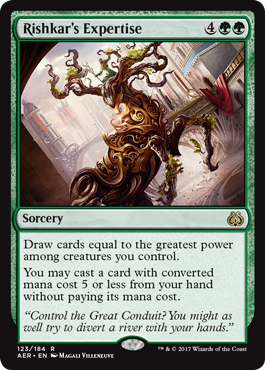
Spread: 2
Power: 4
I’m actually a big fan of these kinds of cards in fatty-heavy Green builds that are looking for ways to restock their hands. Rishkar’s Expertise is only slightly more expensive than most of these effects, and it’s likely to refund most of that mana when it resolves.
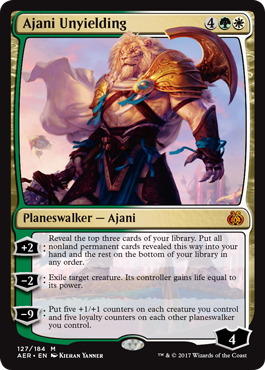
Spread: 4
Power: 2
Green/White decks to be permanent-based, so the +2 is pretty likely to hit and obviously the -2 is almost always going to be relevant. The main question is whether he’s worth six mana, and I believe the answer is no for most decks. The one deck where I think he could be above average is Planeswalker control. Generating card advantage and killing creatures are the most important abilities for a planeswalker to have in that deck, so Ajani should be right at home.
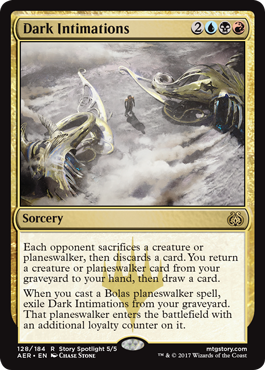
Spread: 5
Power:1
Seems super low impact compared to other cards in these colors. Compare with Capital Punishment.

Spread: 4
Power: 3
Cards that synergize with other good cards tend to be good themselves, and this guy is no exception. Green/White has a ton of spicy (and cheap) permanents that tend to draw removal, so there are always going to be solid targets for recursion. It’s also worth mentioning that he goes infinite with a sac outlet and Saffi Eriksdotter or Angelic Renewal. In fact, if you’ve got a Sterling Grove and a little time, you can sac Sterling Grove on your upkeep to put Greater Good on top of your library, draw it, then cast Rallier to reanimate the Grove. Sac the Grove again to put Angelic Renewal on top, then cast Greater Good and sacrifice any creature other than Rallier to draw the Renewal off the top. Cast Renewal, then Sacrifice Rallier to Greater Good, looting for three. Angelic Renewal returns Rallier, which returns Renewal. Repeat until you’ve dug through your entire deck for a win condition sac outlet.
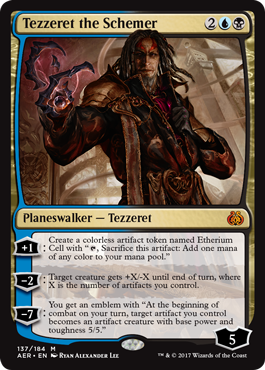
Spread: 2
Power: 2
While I do like the -2, the +1 is not impactful enough to make me want to use it and the ultimate is pretty terrible. Black has so many better options for removal that you don’t need to waste your time with this slow, expensive, narrow, situational card.
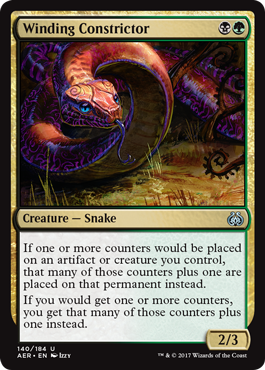
Spread: 2
Power: 3
It’s basically a second copy of Hardened Scales for the decks that want it. It’s a little worse against infect, but that’s whatever since the infect decks are already so lethal to begin with.

Spread: 1
Power: 1
Not only am I pretty confident that the energy deck doesn’t exist in Commander, but even if it did it would probably involve Blue, and I can’t imagine running this over one of Blue’s many Time Warp effects.
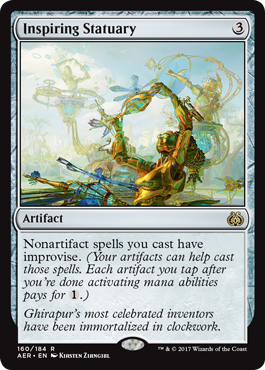
Spread: 1
Power: 2
The only lists I can think of that have enough non-mana rock artifacts and non-artifact spells to use this card tend to specialize in either artifact tokens, Vehicles, or Equipment. In artifact token or Vehicle decks, you’d almost always rather be attacking with your tokens/Vehicles. This might do something in the latter archetype.

Spread: 1
Power: 2
I don’t think this is good enough for most tribal decks, but it can generate free counters in Ghave.

Spread: 2
Power: 5
Best card in the set, and it’s not close.
Your deck has to be heavily invested in either mana rocks or mana dorks for this card to be effective, but if you’re in one of those camps then you’ll find it to be quite absurd. Once you have Paradox Engine and 3+ mana worth of rocks/dorks, you’ll find that every spell you cast is either free or it actually nets you mana, so you can just chain card draw spells and dig through your deck until you hit a win condition. It’s such a strong engine that it’s worth it to build an entire deck around tutoring it out, because the upside is enormous. This card will also change up the order in which Arcum Dagsson tutors for stuff, since it untap your Myr Turbine and your Arcum to net an additional tutor with every spell you cast.
Here’s a list built around Paradox Engine:
Nin Artifact Combo
Note that the deck doesn’t even have access to Black’s tutors, which means the ceiling on the Engine is even higher than the frequent T5 kills that list represents.
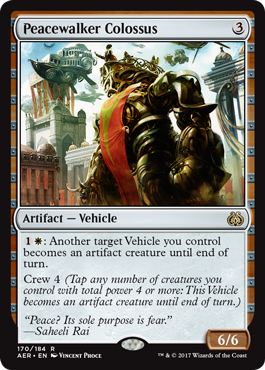
Spread: 1
Power: 2
Depala is the only deck so heavily invested in Vehicles that it could make use of this effect. I like the idea of limiting the amount of creatures you keep on the board in your Vehicle deck so that you can exploit Vehicle’s immunity to board wipes, and this card does a good job of enabling that strategy.
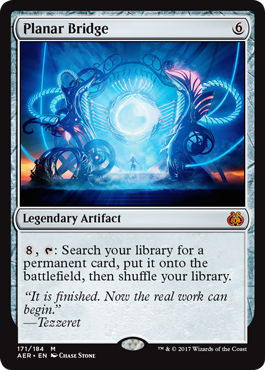
Spread: 2
Power: 2
Most colors have better ways of finding their win conditions, so I think it’s safe to say this is only likely to be good in Monored or Monobrown artifact ramp decks. It’s obviously absurdly expensive, but you’re probably going to be in a good position if you can fire it off even once, seeing as you can just grab a Blightsteel or an Eldrazi or something.
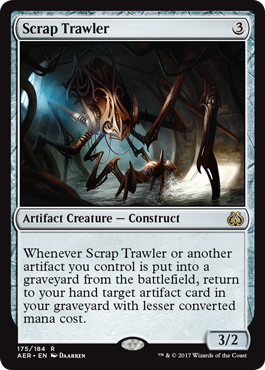
Spread: 2
Power: 3
This card is super hard to evaluate, so take those numbers with a grain of salt. It seems great in sacrifice-oriented artifact builds like Daretti or Breya, but I’m not quite sure how good it is if you’re playing an artifact deck that has less control over when things hit the graveyard.
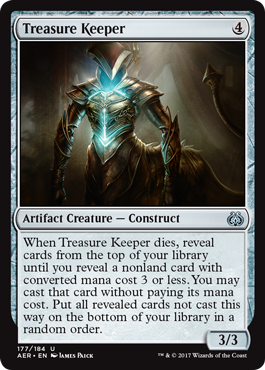
Spread: 1
Power: 2
I’m always on the lookout for artifact creatures that generate value because I think artifact reanimation needs more solid targets to be truly good. Esper artifact decks probably have better things to do than try to cascade into value, but I think this guy could be playable in Daretti.

Spread: 1
Power: 2
If Mox Opal is good in your deck, I give you permission to run this card.
Wrapping Up
Please let me know if there are any cards you think I missed or if you think I evaluated any of these cards incorrectly. Thanks for reading!
122 notes
·
View notes
Text
Great Christmas time Gift Suggestions For Children
Carries out life feel like an exciting challenge where you come to debate a lot of pieces in order that you can find the whole picture? As an around the world published writer, several of John's jobs feature: An Intense Wish To Be successful, The Power from Being Different, In Substitution of Lifestyle, Portion Your Goal # 5, A Second Chance, The Psychic Boy Detective, Better Off Dead, Better Off Dead In Heaven, An All Consuming Desire To Do well, Defying Fatality In Hagerstown, Awesome Effectiveness Concepts and Estimates, as well as A Present from Above.
Most of these responses are down to earth as well as real world actions - one thing you could claim to a buddy or relative. When each of those elements reside in alignment, after that that is actually much easier to prioritize your day in order that you are actually certainly building your dazzling company as well as creating your satisfying lifestyle! The primary thing you need to perform inning accordance with the Fantastic Remuneration Program Online video is actually pay attention to products that have massive market possibility and also are expanding. Exactly what a fantastic technique to ensure your new small company in your place or as a local business in itself. These on the internet shops can additionally recommend dazzling ideas for you if you run out of concepts! Emeralds are actually much rarer than rubies and only suitors of enormous wide range might hand out thus priceless a gift on a lady. That is actually precisely why certainly not all precious stones have the difference as well as honor to become sorted as Great Slice Diamonds. Loss and also winter months give a dazzling scenery to burgundy, dark chocolate, or dark maid-matron of honour precious jewelry sets. That is actually when he made a decision to generate a practical DVD qualified Dazzling Remuneration. The Glamor Great waterfall expel supplement the relaxing medical spa ambiance with motivations drawn from attributes. The Toshiba 55HT1U is actually definitely one superb possibility with regards to enhancing your very own Hd TELEVISION screening process expertise. Your business introduction, recent progressions, key methods, as well as earnings share of crucial market gamers in the international Coomassie fantastic blue R250 market have actually been actually covered in the research study report. In the ocean spread out on 2/3rd section from world earth numerous sea water streams circulation by however with assorted temperatures. Business introduction, recent developments, vital methods, and income portion from vital market gamers in the international Fantastic Green market have been dealt with in the study report. Feel that or otherwise, each one of the brilliant techniques to excite the girls you prefer revolve around this set basic thoughts collection, particularly if you would like to do it without turning to deceitful techniques. In fact, having a very clear dream provides meaning to every little thing you perform in your business. While Dazzling Compensation knows the fact that there are scams and also hustler available, this may assist your reader understand that there is actually a lot of good work on call to them too. If you, as well, take advantage of the present from others, those goals will certainly manifest faster as well as along with higher results than you could potentially visualize. Around rubies with the brilliant cut design are the best preferred from diamond forms today. In addition to this, the fads as well as income analysis from the international Clever cresyl bulue market has been actually stated in this file. In case you appear to become curious exactly what Dazzling Slice Precious stones are actually and also why they are so outstanding, definitely maintain analysis. The Ingenious cresyl bulue marketing research study has actually been made up utilizing vital inputs off sector specialists. Your luster is a lighthouse guidepost in the darkness and also an arrowhead off eros to rouse the sexual interest of your mother nature to maturity carrying succulent, moist great things like rainfall after our dry earth craving such magnificent loving. Defiance is also private when an oppressive force is actually maltreating your lifestyle - when you are actually weighted down through stress and anxiety, worry, bordeom, lack from vision, meaning and assurance, this is actually time to hit back, and hit back strongly. Each rock was actually then ground and also brightened by maker, resulting in a dazzling glass stone. Owen Carter off The Great Nightclub on how to make use of online resources to assess assistances throughout the student lifecycle. Princess-cut stones shimmer over usual square-cut rubies and also after viewing one it is actually easy to understand why they contact that brilliant cut. Comical gift concepts are always appreciated in special day event whether it is a funny, a cake in the face or even a practical joke. For Large children games like the Wreck of the Titan, The legend of Aang are actually some of the great presents one could consider. Transformers are additionally striking the marketplace this year. The Hd image off Blu Ray and also Broadcast premium quality has actually been actually incredibly clear, superb and also splendid as consistently, but alas the picture cannot look as sharp as numerous of the far better display screen our experts have checking out recently. Additionally, the most up to date activities as well as their impact on the Global Dazzling cresyl bulue industry have been presented in the document. In case you loved this article and you would like to receive more information regarding yellow pages christmas advert (http://sano-obiettivipervoi.info) i implore you to visit the site. The Attraction Fantastic waterfall shoot complement the relaxing medspa ambiance along with motivations reasoned nature. The Toshiba 55HT1U is actually really one great option for strengthening your personal High Definition TV testing expertise. The business overview, recent developments, crucial tactics, and earnings allotment of essential market gamers in the international Coomassie fantastic blue R250 market have actually been covered in the study file. Though our smart business people are actually presently pros in their particular niches but they always had double thought on the execution from a well-structured SEO approach. Back in the paradises, the angels inform God about all that is actually occurring on the planet along with the monster and also the beasts. While Brilliant Payment recognizes the fact that there are scams and also scam artist out there, that could help your target market discover that there is a bunch of good work on call to them at the same time. If you, also, utilize the gift of others, those aspirations will definitely manifest quicker and also along with greater effectiveness in comparison to you can perhaps visualize. Around rubies along with the dazzling hairstyle type are actually the most preferred of gemstone forms today. The Celtic astrology plant was actually constructed from all plants by means of time and also room, along with origins delved in the planet as well as whose limbs damaged the paradises and also buckled with opportunity to touch each period of the moon. The Federal Communications Commission or even FCC has actually apparently mandated that terminals have the ability to broadcast hd tv indicators by the year 2006. Great Compensation is absolutely nothing to perform with lead generation or even prospecting although that is actually an on hand resource to have when shutting a possibility. Dazzling presenters value the reality and recognize that their most important duty is to develop a solid connection with their target market. Of every one of the Great Cut Diamonds, the round great hairstyle could be referred to as the layout that genuinely efficiently utilizes a treasure's glimmer. Very seldom do folks also convey civilities anymore or even know its own meaning. Nonetheless, when our team consider that the volume from power that strikes the earth is actually only 1360 Watts each meter, and the surface area from Superman's skin is actually around 1.4 gauges (the like a large man), at that point that seems to be clear that he there certainly merely isn't enough power on call to make up his world-wrecking strength, his nuclear-furnace heat sight, the basically impregnable bioelectric industry that makes up his sturdiness, as well as the range of his various other energies.
0 notes
Link
Game Developer magazine's Brandon Sheffield reflects on what designers can learn from their first video game loves. (Originally printed in Game Developer's March issue, available now.)
They say you're forever dating your first love. Not literally, of course, but the early patterns set by your first relationship, and the relationships of your parents, tend to strongly influence how you approach love and relationships for many years to come.
I wonder: Is the same true for games? Do those early games we played in our formative years influence what we now perceive as "good" and "bad" in interactive media? Do they influence how we design games? I submit that they may.
Let's think about a series like Dark Souls/Demon's Souls. These games are punishing, require rather exacting inputs from players, and have somewhat fiddly controls that require getting used to. That sounds like a nice recipe for a failure stew. So why did these games succeed?
One of the praises you often see from reviewers is that the series reminds them of the glory days of Japanese console and arcade games, which were built with much the same recipe. It's like a new love affair with an old flame - the same problems as always, yet sweetly, lovingly familiar. Japanese publication Dengeki said of Demon's Souls, "Fans of old-school games will shed tears of joy." IGN reviewer Sam Bishop echoed the sentiment, saying, "Those that can remember the good ol' days when games taught through the highly effective use of intense punishment and a heavy price for not playing it carefully should scoop this up instantly."
But what about people who didn't grow up with that experience? What about those who are more used to frequent checkpoints, and the game providing a full experience to blaze through in one go, rather than in halting steps? For them, the game is a harder sell, which is why Sony passed on publishing Demon's Souls in the West, and core-oriented niche publisher Atlus had to step up and do it instead.
For Demon's Souls, its link to the past helped it succeed. But perhaps the reverse can also happen: Our personal game heritages could, at times, make us slaves to our past interests. For example, I tend to like games that are interesting, but flawed. To me, a glitch in an otherwise super-polished Call of Duty is extremely glaring and illusion-shattering, but I'll happily forgive poor graphics and the occasional invisible wall in a game like Nier, which stabs out in all directions with new ideas. If a game tries hard to do something different, I'll forgive its faults - and if I want to be a designer who makes games that are good at making money, this preference for different-but-flawed could hold me back from making games with commercial appeal.
With this thought in mind, I decided to dissect my own past as a player to see what influence it might have had on my current interests.
My history is a bit odd - I went from the 2600 and Intellivision (which were already old when I got them, but they were affordable!), to the TurboGrafx-16, which I saved up for months to afford. And this is the console that informed my early days as a player of games.
The Valis series, for example, is not very well known, but I played it to death. It's an action, platforming, hack-and-slash affair that stars a high school girl, out to save the world, with a sword taking on a horde of monsters. Pretty standard fare for the 1990s.
You could jump, perform a sword attack, use magic (and could power up both of these attacks), walk, and roll. I replayed Valis III recently, and I noticed something about those rolls that may have influenced my current interests and design habits. Rolling allows the player to travel for a set distance, both under obstacles and across gaps. But this distance is such that, at times, beginning a roll just a few pixels one way or the other means life or death in a difficult platforming section. On top of that, the platforms themselves can occasionally have dressings that don't count as area you can stand on.
This is most likely something one would want to avoid in the modern era, because it feels like the game has tricked you, when you've clearly made the roll visually, but it's counted as a death. Less obvious, though, is the triumph you feel after defeating that particularly difficult section. It's as though you've succeeded in spite of the game's efforts to thwart you. You are actually fighting against the game itself, which we're generally told not to do - but in a modern game like Demon's Souls, it makes the thrill of victory that much more compelling.
There is a lesson here for me as a designer: I can sometimes focus too much on making things smooth for a player in the immediate term, versus their long-term experience.
I won't bore you with my history as a player, but revisiting these old game-loves continually revealed patterns in my current thinking. For instance, Bonk's Revenge's somewhat mystical and alchemic systems helped drive me to chase the elusive beast that is emergent gameplay in a simple game world. But is that my white whale? That pursuit has, at times, led to feature bloat (which is exactly what happened in the subsequent Bonk installment, incidentally).
Just to make sure I wasn't the only one who's influenced by his past, I asked my friends Tim Rogers of Action Button Entertainment and Frank Cifaldi of Gamasutra.com, with whom I record a weekly podcast (which is also called insert credit), to talk a bit about their formative games, and found them similarly branded by past experience.
For Cifaldi, it was The Secret of Monkey Island, which gave him the first glimpse of a full, living interactive game world. This colored his interest in games for years to come; when he was young, he made adventure games in HyperCard, and later, when he was working at GameTap, he made an interactive community adventure game called Captain McGrandpa.
Rogers, meanwhile, thinks Super Mario Bros. 3 is the best game ever made. SMB3 is very much about precision and timing of jumps and reactions, but also about secrets - warps, hidden passageways, and coin boxes in the sky. It's no wonder, then, that the first game he directed (ZiGGURAT for iOS) is a deceptively simple game about timing, precision, and nothing else - aside from the occasional secret.
For your human relationship problems, you can go to a therapist - but they'll just reflect back what you already know. I highly recommend you take a self-analysis approach to your game history. Going back and dissecting those early learnings can help you grow past your earliest ideas of what a game is, or can be, because while most lessons will be good, some will be bad as well.
The musical platformer Sound Shapes is an interesting case study: If you read the postmortem in the December 2012 issue of Game Developer, you'll see that the game's mastermind, Jon Mak, said, "I don't like platformers, or level editors, but in the back of my mind they made sense." He also added, "That was a thing that we learned: We couldn't achieve our design goals with what we would do naturally."
So here is an example of developers playing against their type, and against their early imprint. This worked well, and brought Sound Shapes to critical acclaim, and many IGF nominations. But at the same time, is it any wonder that (sorry, Jon) the game just doesn't feel like a solid platformer? It feels like an interactive music toy where platforming happens to be the mechanic to drive progress. Without the music element, this would not be a loving homage to the platforming genre.
There are lessons in our past for all of us. Try it out on yourself; think about the first game that really grabbed you. Maybe it's the first game that compelled you to keep coming back, aiming for a perfect score; maybe it's the first game that made you feel like games were a living world; maybe it's the first game that let you play against another player.
Revisit these games with new eyes. While playing them, think about the jump distances for platformers, or how you start a drift in a racing game, and how long that drift lasts. Think about the level progression in RPGs, or the score multipliers in a shooter. How has your current work reinforced those old ideas? How have they strayed? Should you be more critical of those old ideas? It's an interesting exercise which can yield some surprising results. Even if you don't come away with something practical, you may have an easier time explaining why you prefer to sink hours into Minecraft over Skyrim - or the reverse.
The kids of today expect autosaving, persistence, checkpoints, and massive interactivity on a Minecraft scale. And they're not wrong to expect it! That's what they grew up with, and that is to some extent the future of entertainment. But when they grow up, what will they expect from games? What will their first love affair teach them to love and hate?
Getting closer to the now, what about kids who grew up with the Nintendo 64? The precise magic of GoldenEye 64 has never been properly revisited. What of a child who grew up with the Dreamcast? Is anyone serving her needs?
I'm not suggesting we need to mine the past and prey on nostalgia. But attempting to serve similar experiences to those people felt in their youth - in new and modern products - can be a valuable goal. Nobody wants to play a new game that's exactly like GoldenEye 64. They want to play a game that feels like how they remember GoldenEye 64 at the time they were playing it. With a little self-analysis, and a careful study of these bygone eras of games, you might just get at that mystical and elusive feeling.
0 notes